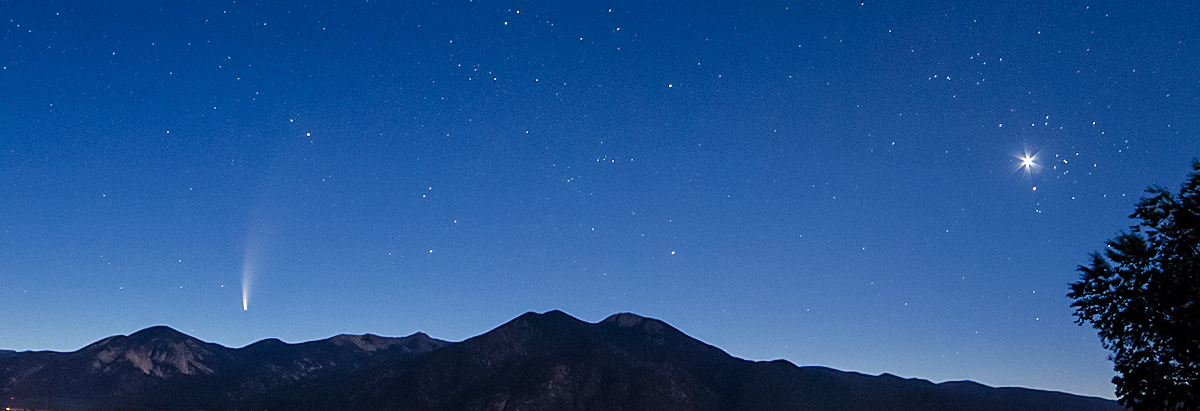
Welcome to taosastronomer.com!
offering
local "hands-on" observing
(visual and imaging) sessions and instruction
viewing and imaging from Rabbit Valley Observatory
a dark sky location on the mesa just west of Taos, NM
Rosette Nebulae (NGC 2237-39) and imbedded open star cluster (NGC 2244) Monoceros Constellation |
Image obtained March 02-03, 2022 through RVO's Explore Scientific’s 127mm ES127ED APO refractor resulting in an 952mm f/7.5 optical system and incorporating a HOTECH field flattener -- and employing RVO's new ZWOASI2400MC Pro Sony CMOS-chipped premium one shot color astronomical camera -- 19 of 20 carefully selected and stacked 240-second color light frames combined with multiple dark, flat and bias calibration frames shot at a Gain setting of 240 / Offset = 50 and using Astro Photography Tool image-acquisition software -- totaling 76 minutes effective luminance; this data used to create the above image. The optics were driven by the Hypertuned Losmandy G-11 mount equipped with Ovision's precision RA worm gear, guided with a ZWO ASI 120MM Monochrome CCD camera through a 60mm guidescope using PhD2 guiding software and post-processed with ASIStudio, DeepSkyStacker, CCDStack2, and Photoshop CS6 s/w. Photographer's note: It is instructive to compare the image above, taken with the superior Explore Scientific apochromatic 127mm refractor (3 optical elements, virtually no false color fringing) and shot with the new ZWOASI full-framed camera with my older previous effort of this well-known object, linked here. The previous image of this very object although beautiful and quite colorful, was captured with a high quality but nevertheless a 2 optical element Williams' Optics Megrez achromatic refractor, and with a uncooled Canon 450XSi, modified for deep-sky use. The difference in the detail (especially noting the stars' lack of significant fringing coloration (halos around stars) and general resolution is extraordinary, due in part to the larger objective lens -- 127mm vs. 80mm -- but also due to the optical type (apochromatic vs. achromatic). Click this link for a discussion of telescopic lens optics. Also, in the case of the original shot, the computer post-processing steps necessary to end up with an acceptable shot was very extensive. The Rosette image as above required no such rigor in post-processing -- the photographs straight out of the camera were really quite good (although dim, process linked here), requiring really only calibration and stacking; followed by only some minor Photoshop adjustments and mild sharpening. Frankly, after calibration, there was virtually no sharpening or noise reduction needed in post-processing. The new image also displays much less "noise" -- that is because the camera is cooled to far below ambient, rendering it more sensitive and noise-free. Click on this text for a link to the steps involved with the acquisition and post-processing of this image. For another astrophotographer's ongoing adventure with this object, please click this linked text. Below is a new astrophotography compilation log feature, recently developed here on this website, and inspired by the book The Astrophotography Manual, by Chris Woodhouse -- highly recommended and linked here.
[copyright Rabbit Valley Observatory/Willis Greiner, 2022 -- all rights reserved]
|
(all content copyright 2015-2022 Willis Greiner Photography, all rights reserved)